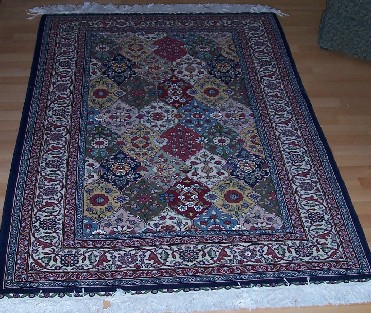

This is a handmade carpet produced in the Hereke region of Turkey in the traditional "Pomegranate" pattern. It is wool on cotton (wool pile with cotton warp and weft). Hereke was the region that made most of the Sultan's carpets, and is regarded as the finest carpet production region in Turkey. This carpet has about 300,000 knots per square meter, and is from a workshop that produced old designs for Kadir.
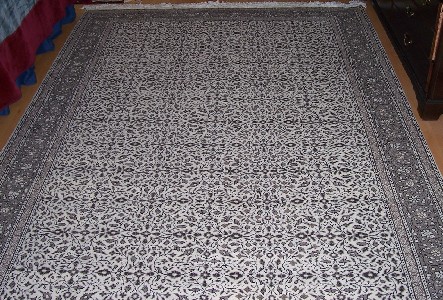
This large handmade carpet was produced in Kayseri, the second most famous carpet producing region of Turkey. It is also wool on cotton, and has about 200,000 knots per square meter. This carpet is unusual in that it has no dyes; the different shades are produced by using wool of different colors!
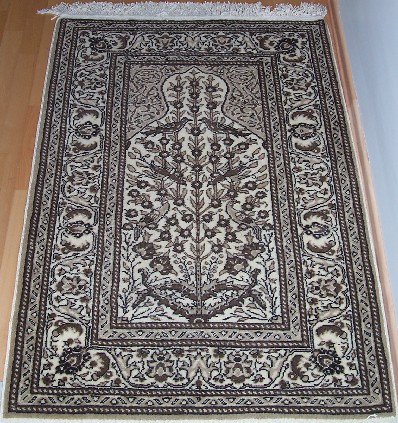
This small prayer carpet was also produced in Kayseri, and like the other is wool on cotton with no dyes.
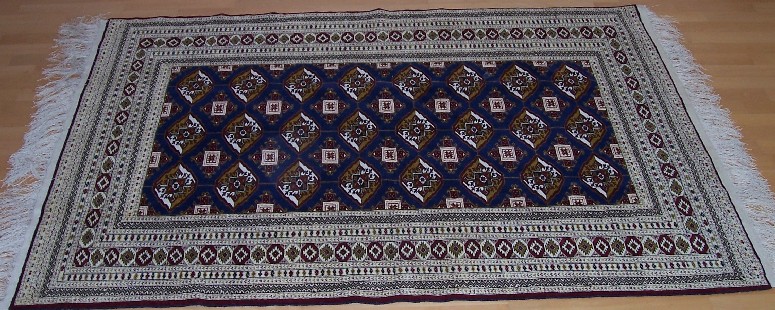
This carpet is Sultani, and was made in Persia (Iran). It is a wool pile carpet with silk warp and weft, which allows about 500,000 knots per square meter. Turkey has recently blocked the border between Iran and Turkey, so carpets like this one will become much harder to find.
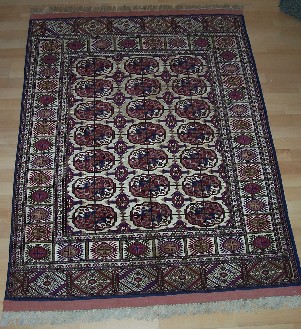
This carpet is from Turkmenistan, and is all silk (silk pile on a silk warp and weft). This is a very short pile carpet, and has about 1,000,000 knots per square meter. The honey color is predominate in the Turkoman carpets. While this carpet is currently by the side of my bed, I intend to have this carpet mounted and hung on the wall like a tapestry.
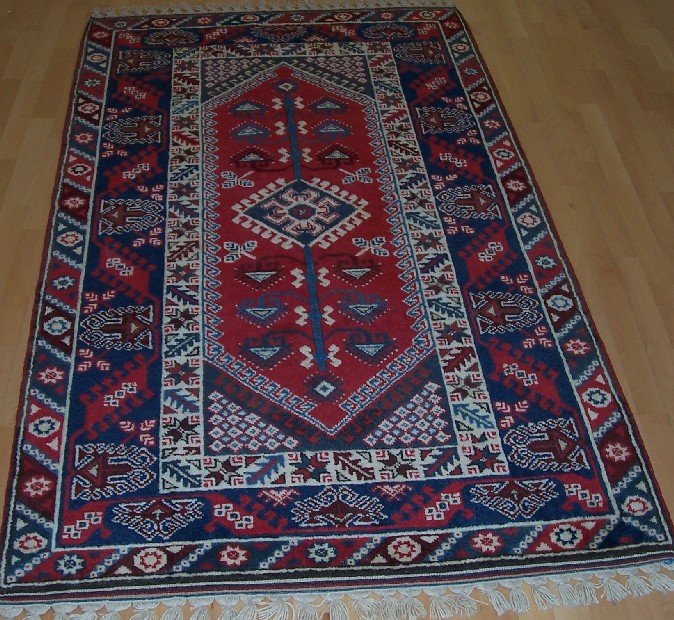
This carpet is a new cottage industry piece from the Antalya region, made of handspun wool that has been vegetable dyed.
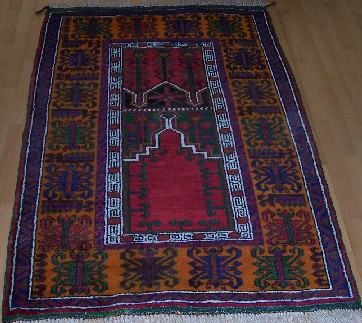
This carpet is also 60 years old, but is from the Konya region. It is vegetable dyed hand-spun wool in a traditional prayer pattern.
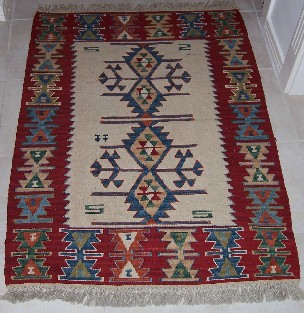
This is a kilim, not a carpet (a carpet has a pile; a kilim is a flat weave with no pile), in a traditional "wedding" pattern. The central figures are hair clips, and signify marriage in regional nomad cultures. Nomadic women wear their hair loose until they get married, when they start using hair clips. Using that design in a kilim means that she wants to get married, but of course cannot just come out and say that in the world of arranged marriages and no dating. Handspun wool and vegetable dyes.

This is another "wedding pattern" kilim, in handspun vegetable-dyed wool like the red one.
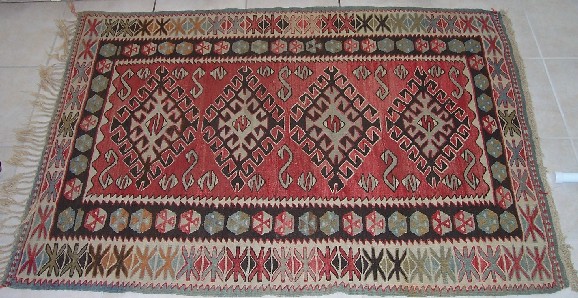
This kilim is also done in handspun wool with vegetable dyes, and is from the southern coast region of Turkey. It is about 20 years old, and is in the "hook" design.

This handmade kilim is made from all-natural wool (like the big Kayseri carpet), and has no dyes at all. The different colors are from different colored sheep!
That is all for the CARPET section!